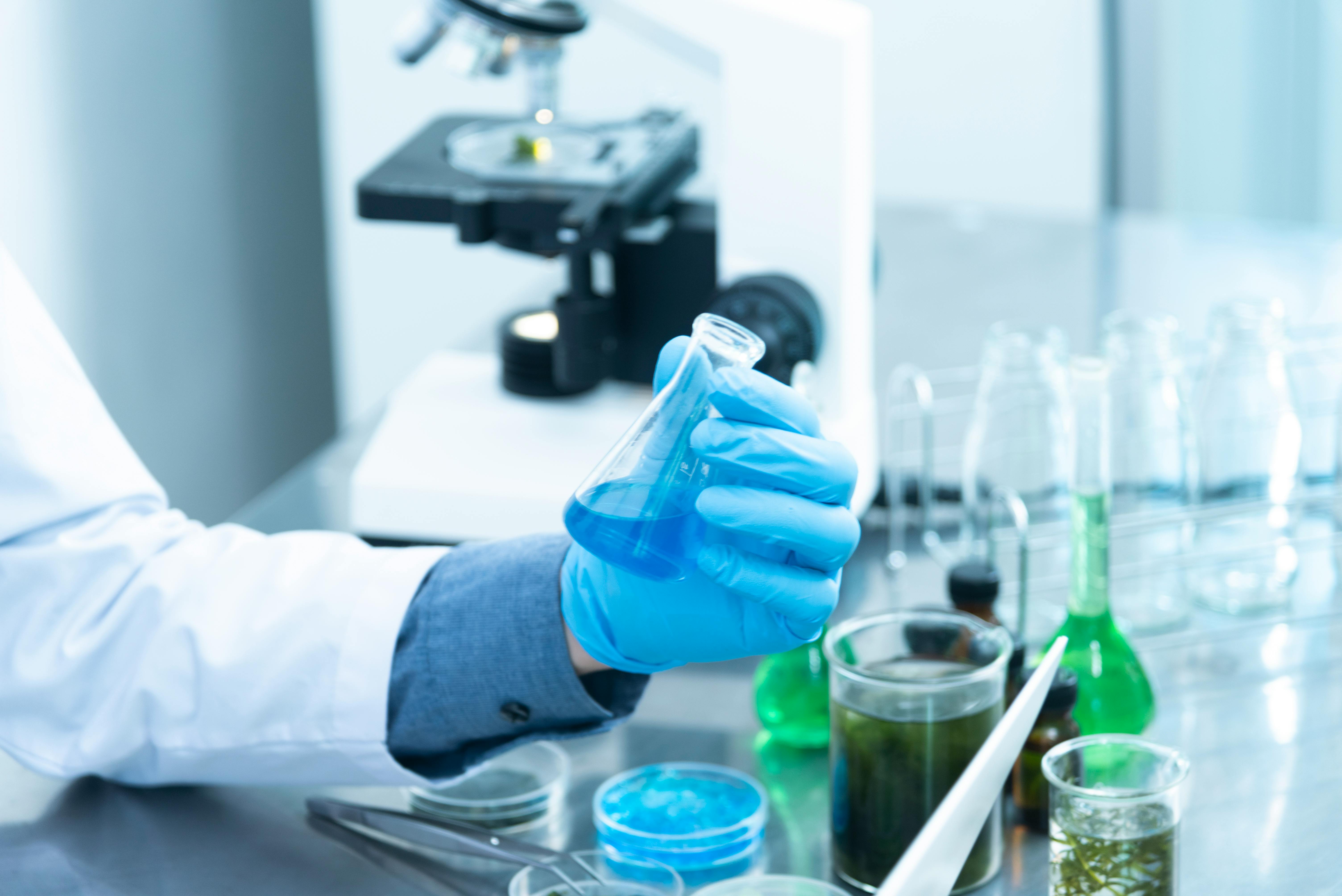Distillation is a physical process used to separate a liquid mixture into its component parts, based on the different boiling points of the components. It is commonly used in the production of alcoholic beverages, in water purification, and in petroleum refineries. Distillation can also be used to separate substances that have similar boiling points but are not miscible, such as aqueous solutions. Although distillation is considered a physical process, it can also involve chemical changes depending on the substance being distilled and the method of distillation used.Distillation is a process of separating the components or substances from a liquid mixture by using selective boiling and condensation. This process involves heating the mixture until it boils, then collecting and cooling the vapor that is produced, which condenses back into a liquid. The vapor typically consists of different components than the original mixture, allowing them to be separated.
Difference between Physical and Chemical Processes
Physical processes refer to the changes that occur in a material’s state without changing its chemical composition. Examples include melting, boiling, freezing, and condensation. These changes are reversible and don’t involve a chemical reaction.
Chemical processes, on the other hand, refer to the changes that occur when one or more substances react chemically to form one or more new substances. These reactions involve breaking bonds between atoms and forming new bonds with different atoms. The resulting products are different from the original reactants in terms of chemical composition and properties.
Physical processes involve energy transfer from one state to another but do not result in the formation of new substances. For example, heating a solid can cause it to melt into a liquid without any change in its chemical composition. Conversely, chemical processes involve energy transfer as well as the formation of new substances with different chemical compositions. For example, when two hydrogen molecules react with an oxygen molecule, water is formed as a product with different properties than those of its reactants.
In summary, physical processes refer to the changes in state of materials without changing their chemical composition while chemical processes involve breaking
Physical Processes of Distillation
Distillation is a process used to separate and purify liquids based on their different boiling points. It is one of the oldest chemical separation processes, and is still widely used today in many industries such as chemical, petrochemical, pharmaceutical, food and beverage processing, biotechnology and environmental protection. Distillation works by heating a mixture to its boiling point and collecting the evaporated liquid in a condenser. The condensed liquid then passes through a series of separators that remove any solid particles or other impurities from the liquid. The resulting liquid is then collected in a receiving flask or vessel.
The process of distillation involves three main physical processes: vaporization, condensation and fractional distillation. Vaporization occurs when a liquid is heated to its boiling point and vaporizes into the gas phase. Condensation occurs when the vaporized gas comes into contact with a cooler surface or container, causing it to revert back to its original liquid form. Fractional distillation is the process of separating the components of a mixture by taking advantage of their different boiling points. This is done by passing the vaporized mixture through one or more
Distillation
Distillation is a process commonly used in the chemical industry to separate two or more substances from a mixture. It involves heating the mixture to its boiling point and then condensing the vaporized components into a separate container. The process of distillation is based on the differences in volatility between components in the mixture. Components with higher boiling points will remain in the liquid phase, while those with lower boiling points will vaporize and can be collected as a separate component. Distillation is one of the oldest and most widely used methods of chemical separation.
Types of Distillation
There are many different types of distillation processes that are used in the chemical industry, each with its own unique characteristics and applications. These include simple distillation, fractional distillation, steam distillation, vacuum distillation, and supercritical fluid extraction. Simple distillation is used for separating two or more volatile liquids from each other, while fractional distillation is used for separating components with different boiling points from each other. Steam distillation is used when one of the compounds involved has a low boiling point or is not volatile at normal temperatures and pressures
Advantages of Physical Processes of Distillation
Physical processes of distillation have numerous advantages. Firstly, distillation is a relatively simple and cost effective process. It also offers a higher degree of product purity compared to other methods such as fractional distillation, which requires more complex equipment. Moreover, it is an inherently safe process as it does not involve any hazardous chemicals or reactants. Finally, physical processes of distillation are capable of recovering solvents from mixtures with high boiling points without the need for additional energy inputs.
Advantages of Chemical Processes of Distillation
Chemical processes of distillation have their own set of advantages as well. Firstly, they provide higher recovery rates than physical processes and are more suited for dealing with complex mixtures with a wide range of boiling points. Secondly, chemical processes can produce products with very low levels of impurities which may not be achievable through physical means alone. Finally, chemical processes allow for the production of very pure distillates without the need for additional energy inputs or complex equipment.

Advantages of Physical Processes of Distillation
Distillation is an important process for separating and purifying liquids. The physical processes of distillation include fractional distillation, steam distillation and vacuum distillation. These processes have some advantages over the chemical processes of distillation. One advantage is that physical processes are more energy efficient than chemical processes. This means that they require less energy to separate and purify liquids, making them more cost effective. Additionally, physical processes are more reliable than chemical processes as they do not rely on chemical reactions or catalysts to be successful. This increases the efficiency and accuracy of the separation and purification process. Furthermore, physical processes also produce higher quality products with fewer impurities than chemical processes.
Disadvantages of Physical Processes of Distillation
Despite these advantages, there are still some drawbacks to using physical processes for distillation. One disadvantage is that physical processes require complex equipment which can be difficult to set up correctly or maintain correctly. Additionally, these processes can take longer than chemical processes due to their reliance on temperature changes in order to separate liquids accurately. Finally, physical processes can be limited in terms
Pressure
Pressure is one of the most important factors that affect distillation. It affects the boiling point of liquids, which in turn affects the efficiency of the distillation process. Lower pressures result in lower boiling points, which allows for a more efficient separation of components. Higher pressures result in higher boiling points and less efficient separation. Therefore, it is important to maintain a constant pressure throughout the entire distillation process to ensure maximum efficiency.
Temperature
Temperature is another important factor that affects distillation. Higher temperatures lead to a faster rate of evaporation, which can increase the efficiency of the process. However, too high of a temperature can cause thermal decomposition, which can lead to an undesired effect on the product. Too low of a temperature can also slow down the rate of evaporation and reduce efficiency. Therefore, it is important to maintain an optimal temperature throughout the distillation process for maximum efficiency.
Molecular Weight
The molecular weight of substances also affects their ability to be distilled. Heavier molecules have more difficulty
Distillation
Distillation is a process of separating components in a mixture based on their different boiling points. This process is used to separate and purify liquids, including water, alcohol, and essential oils. In this process, the liquid is heated at a higher temperature than its boiling point, resulting in the vaporization of the liquid. The vapor then travels through a condenser and is collected as the desired product. Distillation is an energy-intensive process that requires precise control over temperature, pressure, and other key parameters to ensure optimal performance.
Applications
Distillation has been used for centuries in various industries for purification of liquids. Today, distillation is used in many industries including food and beverage processing, petrochemical refining, pharmaceutical production, wastewater treatment and more. In the food industry it is used for removing impurities from cooking oils and for producing alcoholic beverages like whiskey or vodka. In petrochemical refining it is used to separate crude oil into fractions or components such as gasoline or kerosene. In pharmaceutical production distillation is used to produce pure drugs like antibiotics or anti-cancer drugs. Distillation is also

Conclusion
Distillation is a physical process that separates components of a mixture based on differences in boiling points. It does not alter the molecular structure of the components, so it is not a chemical process. Distillation can be used to purify liquids, to separate liquids from solids, and to create complex mixtures from simple ones. It is an important part of chemical manufacturing and laboratory work. With its versatility and easy implementation, distillation is an essential tool for many industries.
In conclusion, distillation is a physical process and not a chemical one, even though it may be used in chemical processing. It allows us to separate mixtures into their component parts with precision and ease. This makes it an invaluable tool in many scientific fields.

